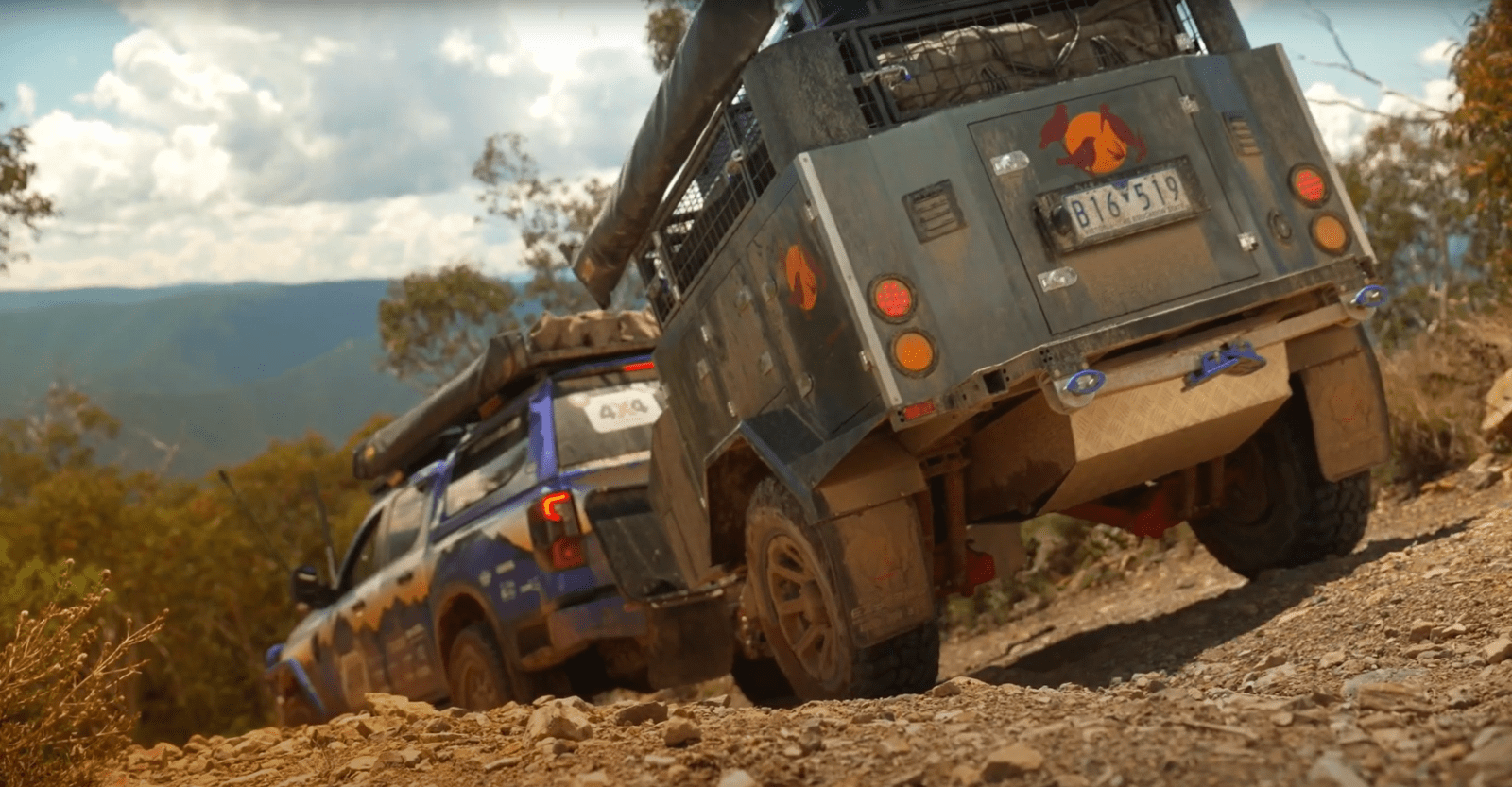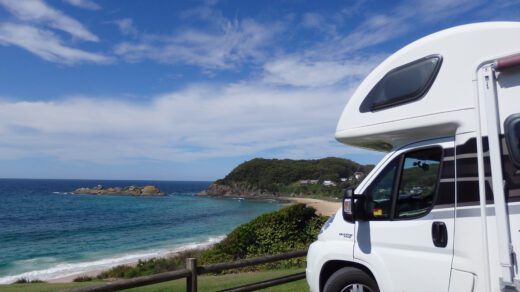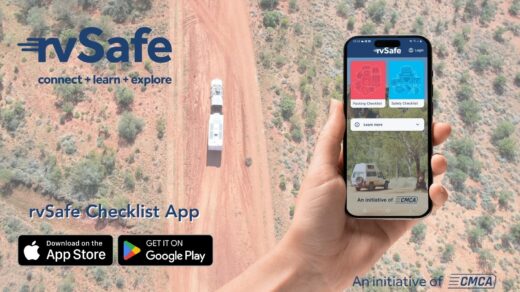1. Choose the Right RV for Off-Road Travel
- Off-Road RVs: Not all RVs are built to handle rough, unsealed roads. An off-road RV or caravan will be equipped with reinforced suspension, high ground clearance, and chassis protection, making it better suited for bumpy, rugged trails.
- 4WD Capability: While some off-road caravans and camper trailers can be towed by standard vehicles, a 4WD tow vehicle offers superior traction and power, especially on sandy or muddy tracks.
- Check Tyres and Suspension: Ensure your RV’s tyres and suspension are designed for off-road use. Off-road tyres provide better grip on unpaved surfaces, while enhanced suspension handles the stress of rough terrains
2. Prepare for Remote Conditions
- Supplies and Spares: Remote travel means carrying extra supplies, including fuel, food, and water. Plan for at least 20-30% more than you think you’ll need, as conditions can cause unexpected delays.
- Essential Spare Parts: Carry spare tyres, a tyre repair kit, hoses, belts, and extra fuses. A tool kit and basic repair knowledge are essential in case of breakdowns in isolated areas.
- Communication and Navigation: Many off-road areas lack mobile coverage. Carry a satellite phone, UHF radio, and a reliable GPS system. Pre-download maps (offline maps are available in GeoWiki X) and know how to use them.
3. Understand Terrain Challenges
- Desert Sand: Australia’s deserts, like the Simpson and Great Victoria, require knowledge of sand driving. Lower tyre pressure to increase traction, keep a steady speed, and avoid sudden braking or acceleration to prevent bogging.
- Mud and River Crossings: Muddy tracks and river crossings are common in rainforests and remote regions like the Kimberley. Ensure water crossings are shallow enough for your vehicle, and always test the depth and current before attempting a crossing.
- Corrugated Roads: Outback roads are often corrugated, causing rattling and potential damage to RV interiors. Drive slower on these surfaces, and keep a steady, moderate speed to reduce vibration.
4. Tyre Maintenance and Pressure Adjustment
- Off-Road Tyres: Invest in off-road tyres that can handle rough surfaces and provide good traction.
- Tyre Pressure: Reducing tyre pressure on unsealed roads can improve traction and ride comfort. However, return to normal pressure when back on sealed roads to prevent excessive wear and heat buildup.
- Tyre Repair Kit: Carry a tyre repair kit and know how to use it. Punctures are common on rocky trails, and the ability to patch a tyre can save you from being stranded.
5. Ensure Secure Storage Inside the RV
- Lock Down Loose Items: Bumpy roads can jostle and even break loose items. Secure cabinets, latches, and drawers to prevent items from moving around, causing damage or injury.
- Protect Breakables: Use foam padding or storage containers to protect delicate items like glassware and electronics. Store heavy objects low to avoid tipping or falls.
- Weight Distribution: Keep weight evenly distributed to prevent the RV from becoming unbalanced. Proper weight distribution is crucial for towing stability on uneven terrain.
6. Weather Awareness and Seasonal Planning
- Rainy Season Considerations: Many off-road routes in northern Australia are impassable during the rainy season (November to April) due to flooding and road closures. Plan trips during the dry season, especially in tropical areas.
- Extreme Temperatures: Desert temperatures can reach above 40°C in summer, while nights in winter can be very cold. Pack accordingly and consider timing your trips for spring or autumn when temperatures are more moderate.
- Bushfire Safety: Bushfires can be a hazard in remote areas, particularly in summer. Check fire conditions before your trip and have an evacuation plan in case of sudden fire danger.
7. Reduce Your Speed on Rough Roads
- Slow down when driving on unsealed or uneven surfaces. Off-road conditions require a lower speed to maintain control, reduce wear on tyres and suspension, and prevent loose gravel or rocks from causing damage.
- Plan for Longer Travel Times: Off-road travel often takes longer than expected due to reduced speeds, stopping for obstacles, and adjusting for the terrain. Give yourself plenty of extra time.
8. Leave No Trace
- Respect Nature and Wildlife: Australia’s remote areas are home to delicate ecosystems. Minimise your environmental impact by sticking to marked tracks, avoiding camping too close to water sources, and disposing of waste properly.
- Stay in Designated Camping Areas: Many national parks and conservation areas have designated camping spots. Use these to protect native vegetation and wildlife.
- Take All Waste with You: Bring back everything you brought, including rubbish and food scraps.
9. Top Off-Road Destinations in Australia
- The Kimberley, WA: Known for its rugged beauty, the Gibb River Road takes you through stunning gorges and waterfalls, with plenty of off-road challenges.
- Cape York, QLD: The ultimate destination for off-roaders, Cape York Peninsula offers river crossings, remote rainforests, and the thrill of reaching the northernmost point of Australia.
- Flinders Ranges, SA: An easier off-road destination with breathtaking outback landscapes, ideal for those new to off-road RV travel.
- Simpson Desert, NT/QLD/SA: Australia’s most famous desert crossing, the Simpson Desert is for experienced off-roaders ready to tackle sand dunes and remote conditions.
- High Country, VIC: The Victorian High Country offers challenging mountain tracks, beautiful valleys, and rivers ideal for camping and adventure.
Exploring Australia’s off-road destinations by RV can be deeply rewarding but requires careful preparation and respect for the environment. Make sure your vehicle is up to the task, carry essential supplies, and prepare to adapt to rugged, remote conditions. With the right preparation, you can experience Australia’s most beautiful and untouched landscapes, creating memories that last a lifetime.






